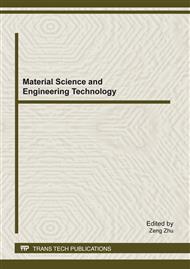[1]
ZHAO Ting-fa, WANG Rui-hua, WANG Pu The Application of Genetic Algorithm in the Energy Optimization Control of the VAV System [J]. Control Engineering of China, Jul. 2009 Vol. 16, S1: 110-116.
Google Scholar
[2]
Feng H M. Self-generation RBFNs using evolutional PSO learning [J]. Neuro- computing, 2006, 70(1-3): 241-25.
DOI: 10.1016/j.neucom.2006.03.007
Google Scholar
[3]
YaoY, Lian ZW, LiuW W, etal. Evaluation program for the energy-saving of variable-air-volume systems [J]. Energy and Buildings, 2007, 39: 558-568.
DOI: 10.1016/j.enbuild.2006.09.010
Google Scholar
[4]
M assifN, Karl S, Sabourin R. Optimization of HVAC control system strategy using two-objective genetic algorithm[J]. HVAC& Research, 2005, 11(3): 460-486.
DOI: 10.1080/10789669.2005.10391148
Google Scholar
[5]
Austin S.B., 1991. Optimum chiller loading. ASHRAE Journal: 40-43.
Google Scholar
[6]
Kuang Xiao-lei, A New Type of Air-conditioning System Optimization Model Indicators[J], ACTA SCIENTIARUM NATURALIUM UNIVERSITATIS SUNYATSENI. Vol. 47 Sup Jul. 2008: 25-28.
Google Scholar
[7]
MENG Hua, LONG Wei-ding, WANG Sheng-wei. Real time control analysis of chilled water supervisory controller in central air-conditioning [J]. Journal of HV&AC. No. 11, (2005).
Google Scholar
[8]
Braun J E. Applications of Optimal Control to Chilled Water Systems without Storage[J]. ASHRAE Transactions, 1989, 95(PartⅠ): 663-675.
Google Scholar
[9]
House J M, Smith T F. A system approach to optimal control for HVAC and building system [J]. ASHRAE Transactions, 1995, 102: 412~423.
Google Scholar
[10]
Nizet J.L.,J. Lecomte L., and F.X. Litt. Optimal control applied to air-conditioning in building. ASHRAE Trans. (1984).
Google Scholar


